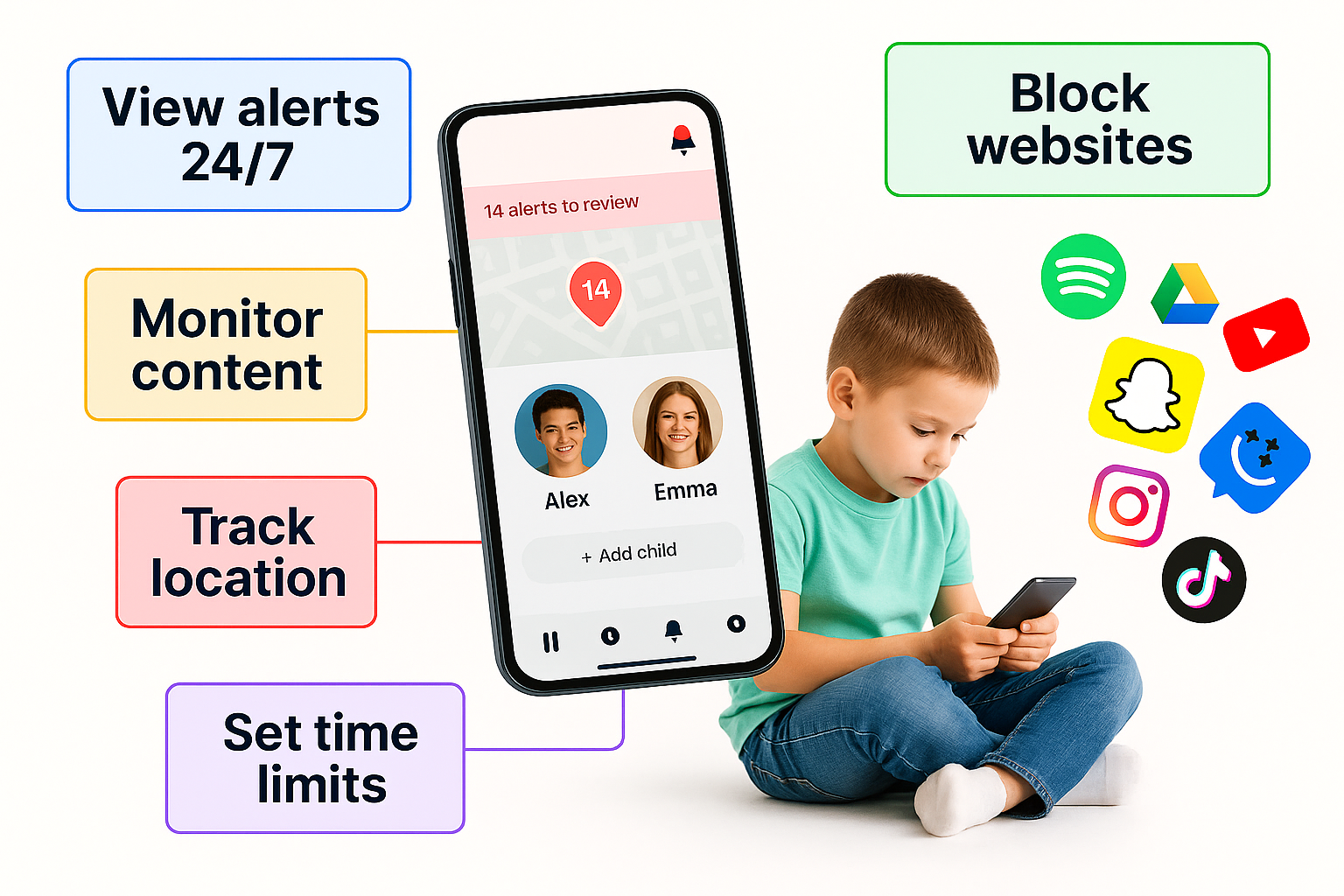Beyond Screen Time: How to Build Your Child’s Digital Resilience with Their First Phone
Introduction: It’s Not Just a Phone. It’s a Foundation.
When you hand your child their first phone, it feels like a rite of passage.
A milestone.
An exciting moment.
But here’s what most parents miss: you’re not just giving them a device. You’re giving them a new world to navigate—and the skills they develop now will shape how they use tech for the rest of their life.
The question isn’t: “How much screen time should they have?”
The real question is: “How can I help my child become strong enough to handle the digital world?”
The answer? Digital resilience.
What Is Digital Resilience?
Digital resilience is a child’s ability to handle challenges online—whether it’s dealing with hurtful messages, resisting peer pressure, focusing in the face of distractions, or knowing when to unplug.
It’s the digital version of teaching your child to:
- Cross the street safely
- Stand up to bullies
- Say no to peer pressure
- Think before acting
With the right structure, your child’s first phone becomes a powerful training tool for emotional strength, responsibility, and independence.
Why Screen Time Rules Aren’t Enough Anymore
Let’s be honest: screen time limits alone don’t teach real-life skills.
You can shut off Wi-Fi. You can ban social media. You can install every parental control on Earth. But if your child doesn’t understand why—or how to make better choices on their own—those limits fall apart.
Digital resilience means your child eventually won’t need constant supervision—because they’ll know how to manage themselves.
And that’s the real win.
5 Pillars of Digital Resilience (And How to Build Them with Your Child)
1. Awareness: Help Them Recognize What’s Healthy
Kids don’t automatically know when something online is harming their mood, focus, or self-esteem.
That’s where you come in.
- Ask questions like:
“How did using that app make you feel today?”
“Do you notice if you get more tired or frustrated after being on certain apps?” - Encourage your child to notice their own patterns: Do they feel better after texting a friend? Or worse after scrolling for hours?
When they become aware of what’s happening inside them, they become less controlled by it.
2. Control: Structure Without Surveillance
Kids don’t need total freedom with their first phone—but they also don’t need to feel like they’re being spied on.
A phone with built-in safety features like:
- App approval requests
- Time restrictions
- Location tracking
gives your child safe boundaries while also building trust.
Let them help design the “rules of the phone,” such as:
- Where it charges at night (hint: not in their room)
- What hours it’s on
- Which apps they can request (and why)
Let them feel part of the system—not under it.
3. Connection: Tech Should Bring You Closer
Phones shouldn’t create emotional distance. They should become tools for real connection.
Try these:
- Make a routine “connection call” with grandparents or a family friend using the phone.
- Use the phone for creative activities: take photos of nature, record funny videos together, create a shared playlist.
- Create a “phone-free” ritual once a day: dinner, walk, bedtime.
Show your child that technology is best when it brings people together—not when it pushes them apart.
4. Reflection: Review Usage as a Team
Most kids (and adults) have no idea how much time they actually spend on screens—or what they’re doing.
That’s why building a weekly reflection habit can be so powerful.
Once a week:
- Sit down for 10 minutes and review their screen usage report (most phones have them built-in).
- Ask: “What app did you enjoy most?” “What felt like a waste of time?”
- Let them choose one habit to improve the next week—and celebrate when they follow through.
This turns screen time into a growth opportunity—not a battle.
5. Growth: Make Freedom Earned and Measured
Your child’s first phone should evolve with them.
Start with a basic, safe phone—limited apps, high control.
Then gradually:
- Unlock new features as they show responsibility.
- Let them help decide which apps to try.
- Expand their freedom after consistent reflection and rule-following.
This turns their phone journey into a trust-building process, not just a one-time decision.
What It Looks Like in Real Life
Let’s take two 11-year-olds, both getting their first phones.
- Child A gets a standard smartphone. No rules. Full access. Social media downloaded within a week.
Within months, they’re moody, addicted to YouTube, and stop talking to family. - Child B gets a kid-safe phone with content filtering, screen time limits, and weekly check-ins.
They use it mostly for communication and learn how to balance use on their own. Their confidence grows, and trust with their parents deepens.
Both kids got phones.
Only one built resilience.
Start Building Digital Resilience Today: 5-Minute Actions
You don’t need to overhaul your parenting strategy overnight. Start with one small change:
✅ Create a “Phone Values List” — what your family believes about tech use
✅ Introduce a check-in habit: “How did your phone make you feel today?”
✅ Move the charger out of your child’s bedroom
✅ Install usage reports and review them together weekly
✅ Choose a safe device that matches your child’s stage, not their age
Conclusion: Don’t Just Hand Over a Phone—Hand Over a Framework
You’re not just giving your child access to technology. You’re giving them a chance to become someone who knows how to use it wisely.
That’s digital resilience.
And it doesn’t happen by accident—it happens because you guided it from the beginning.

